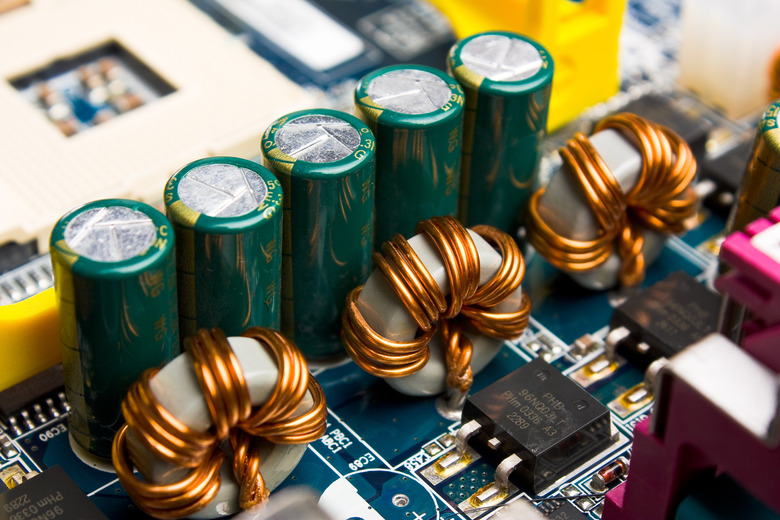Input & Output Characteristics Of Common Emitter NPN Transistors
The word "transistor" is a combination of the words "transfer" and "varistor." The term describes how these devices worked in their early days. Transistors are the main building blocks of electronics, in much the same way DNA is the building block of the human genome. They are classified as semiconductors and come in two general types: the bipolar junction transistor (BJT) and the field effect transistor (FET). The former is the focus of this discussion.
Types of Bipolar Junction Transistors
Types of Bipolar Junction Transistors
There are two fundamental types of BJT arrangements: NPN and PNP. These designations refer to the P-type (positive) and N-type (negative) semiconductor materials from which the components are constructed. All BJTs therefore include two PN junctions, in some order. An NPN device, as the name suggests, has one P region sandwiched between two N regions. The two junctions in the diodes may be forward-biased or reverse-biased.
This arrangement results in a total of three connecting terminals, each of which is assigned a name specifying its function. These are called the emitter (E), the base (B) and the collector (C). With an NPN transistor, the collector is connected to one of the N portions, the base to the P portion in the middle and the E to the other N portion. The P segment is lightly doped, while the N segment at the emitter end is heavily doped. Importantly, the two N portions in an NPN transistor cannot be interchanged, as their geometries are completely different. It may help to think of an NPN device as a peanut-butter sandwich, but with one of the slices of bread being an end piece and the other one from mid-loaf, rendering the arrangement somewhat asymmetrical.
Common Emitter Characteristics
Common Emitter Characteristics
An NPN transistor may have either a common base (CB) or a common emitter (CE) configuration, each with its own distinct inputs and outputs. In a common emitter set-up, separate input voltages are applied to the P portion from the base (VBE) and the collector (VCE). A voltage VE then leaves the emitter and enters the circuit of which the NPN transistor is a component. The name "common emitter" is rooted in the fact that the E portion of the transistor integrates separate voltages from the B part, and the C part emits them as one common voltage.
Algebraically, current and voltage values in this set-up are related in the following way:
\(\text{Input: }I_B=I_0\frac{e^{VBT}}{V_T-1}\text{Output: }I_c=\beta I_B\)
Where β is a constant related to intrinsic transistor properties.
Cite This Article
MLA
Beck, Kevin. "Input & Output Characteristics Of Common Emitter NPN Transistors" sciencing.com, https://www.sciencing.com/input-common-emitter-npn-transistors-6771607/. 14 December 2020.
APA
Beck, Kevin. (2020, December 14). Input & Output Characteristics Of Common Emitter NPN Transistors. sciencing.com. Retrieved from https://www.sciencing.com/input-common-emitter-npn-transistors-6771607/
Chicago
Beck, Kevin. Input & Output Characteristics Of Common Emitter NPN Transistors last modified August 30, 2022. https://www.sciencing.com/input-common-emitter-npn-transistors-6771607/
